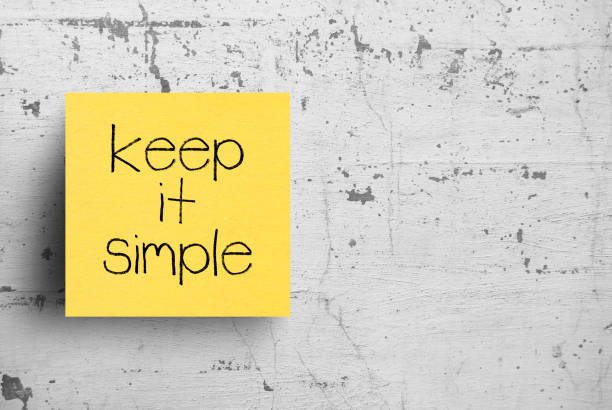Now Reading: Why Simple, Clear Language Works Best in Every Situation 2025
-
01
Why Simple, Clear Language Works Best in Every Situation 2025
Why Simple, Clear Language Works Best in Every Situation 2025

Table of Contents
In today’s fast-moving digital world, the ability to communicate clearly is more important than ever. Whether you’re writing an email, creating a business website, or posting on social media, the words you use must be simple, clear, and easy to understand. This isn’t just a writing tip it’s a powerful strategy for success.
Using simple, clear language is not about dumbing things down. It’s about making your message easy to follow for everyone, no matter who they are or where they come from. When your audience understands you right away, you save time, avoid confusion, and build trust.
Let’s explore why simple language works, who it benefits, and how it can help you in business, education, healthcare, and daily life.
What Is Simple, Clear Language?
Simple, clear language means using words and sentences that are easy to understand. It avoids long, complicated phrases or difficult vocabulary. It focuses on short sentences, familiar words, and a natural tone. It also organizes information in a logical order.
For example:
- Instead of saying “commence,” say “start.”
- Replace “utilize” with “use.”
- Change “in the event that” to “if.”
You don’t lose meaning. You make the message clearer.
Why Simple Language Works
Research shows that people prefer clear writing over complex language. In fact, studies from Harvard and Princeton found that people see writers as more intelligent when they write clearly, not when they use big words.
Here’s why simple language is powerful:
- It builds trust: When people understand what you’re saying, they are more likely to trust you. Confusing language creates distance and doubt.
- It saves time: Clear communication helps people make faster decisions and avoid mistakes.
- It reaches more people: Simple writing works well for all reading levels, including those with lower literacy or non-native speakers.
- It boosts results: Whether it’s sales, support, or education, clarity improves outcomes. People take action when they understand the message.
Real-World Examples of Clear Communication

- Business:
Big brands like Apple, Google, and Airbnb are known for their clear writing. Their websites and apps use plain words that everyone can understand. This helps them connect better with customers and stand out from competitors. - Healthcare:
In hospitals, simple language saves lives. Medical instructions that are too complex can lead to mistakes. That’s why many doctors and nurses are trained to use plain language when talking to patients. - Government and Law:
Legal documents used to be full of jargon. Today, governments in the US, UK, and other countries promote “plain language” rules so that the public can easily understand laws, rights, and services. - Education:
Teachers who explain lessons in clear terms help students learn faster and feel more confident. Complex language can make students feel lost or discouraged.
The Rise of Plain Language in the Digital Age
In the age of social media, short attention spans, and mobile screens, people don’t have the time—or patience—to read complicated text. This has led to a movement in favor of plain language across industries.
Here’s how it plays out online:
- Websites: Clear headlines and call-to-action buttons increase clicks and conversions.
- Emails: Simple subject lines get more opens.
- Social Media: Posts written in plain, human language get more likes, shares, and comments.
- Chatbots and AI tools: These technologies are programmed to use simple language so that users of all ages and backgrounds can understand them easily.
Tips for Writing in Clear, Simple Language
Want to improve your own communication? Here are some easy tips:
- Use everyday words Avoid jargon and technical terms unless necessary.
- Keep sentences short Aim for 15–20 words per sentence.
- Be direct – Say what you mean without extra fluff.
- Use active voice – “We delivered the package” is clearer than “The package was delivered by us.”
- Break up text – Use headings, bullet points, and white space for easier reading.
- Test your writing – Read it aloud or use tools like Hemingway App to check readability.
Who Benefits the Most?
Clear language helps everyone, but it especially helps:
- Non-native English speakers
- People with dyslexia or other learning differences
- Older adults
- Children and young learners
- Busy professionals
- People reading on small screens
When you choose simple words, you make your content more inclusive.
Simple Doesn’t Mean Boring

Some people worry that writing simply will sound dull. The truth is, simple writing can still be creative, emotional, and powerful. Think about famous speeches or bestselling books—many use short, powerful words to make a big impact.
Take Martin Luther King Jr.’s I Have a Dream” speech. It uses everyday language, yet it’s one of the most inspiring speeches in history. Or look at a children’s book like “The Very Hungry Caterpillar.” It uses simple words, but teaches deep ideas in a beautiful way.
Final Thoughts
In a noisy world filled with too much information, simplicity cuts through the clutter. Whether you’re running a business, teaching a class, giving a speech, or writing a social post, using clear, simple language helps you connect.
It’s not just about good grammar. It’s about making sure your message is heard, understood, and remembered.
Read More:- Shobha Realty Launches Its Most Luxurious Project Yet—Full Details Inside 2025






















